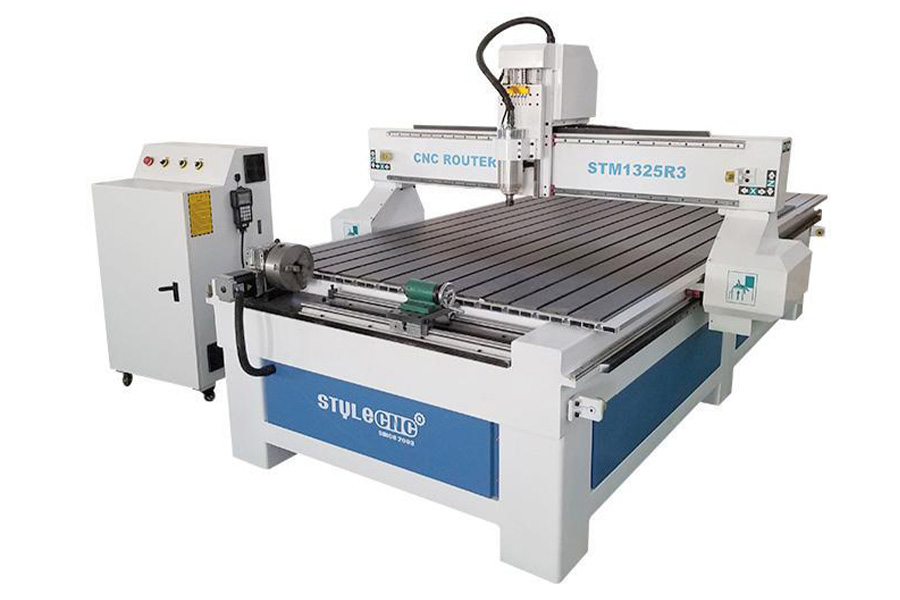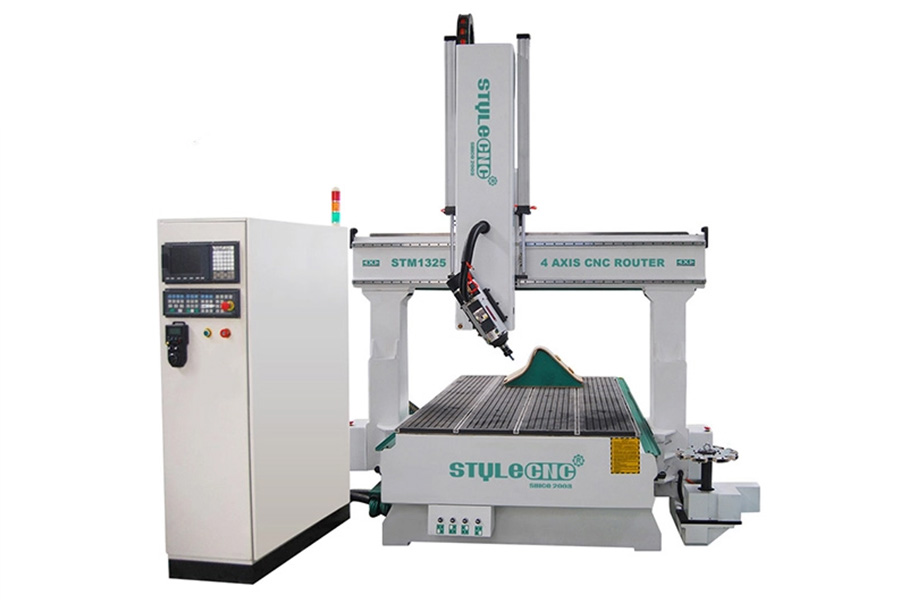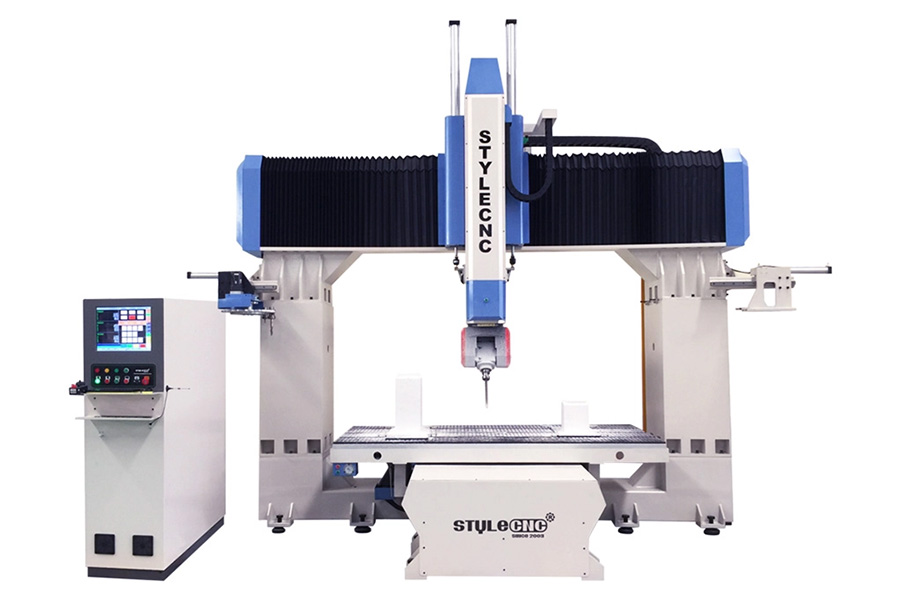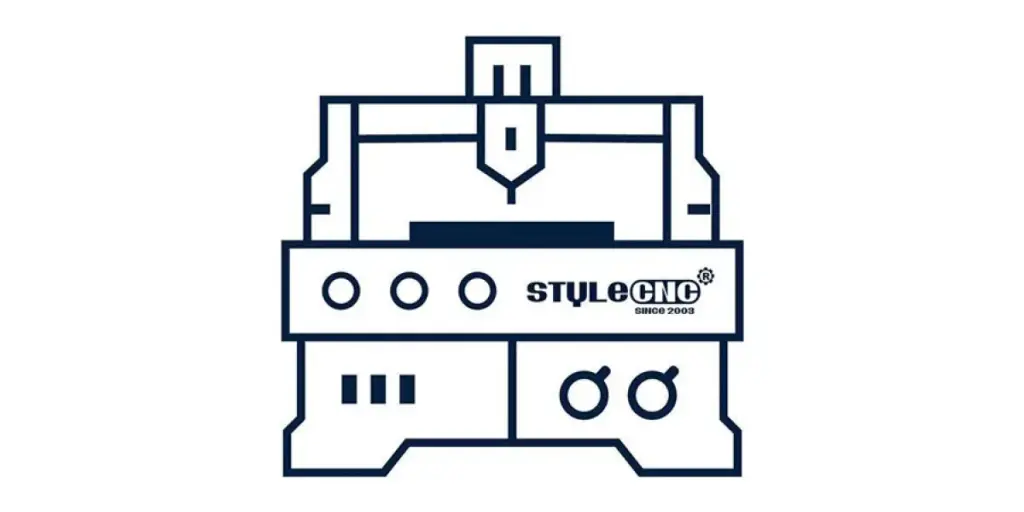Table of Contents
Understanding 3-axis, 4th-axis, 4-axis, and 5-axis CNC router machine kits
Which CNC router machine is the right one for you?
How many axes do you actually need?
Buying a CNC router kit may seem mindboggling with so many different models on the market. How do you know if you need a 3-axis, 4-axis, or 5-axis CNC router? What’s the difference? You’re not alone! It’s a common dilemma for every first-time CNC router buyer. Read this easy guide to help you understand what it all means, and which is the right model for you and your needs.
Understanding 3-axis, 4th-axis, 4-axis, and 5-axis CNC router machine kits
These are some of the different types you’ll find on the market right now:
5-Axis: X-Y-Z-A-B, X-Y-Z-A-C, X-Y-Z-B-C (The spindle can be rotated 180° both left and right).
4-Axis: X-Y-Z-A, X-Y-Z-B, X-Y-Z-C (4-axis linkage).
4th-axis: Y-Z-A, X-Z-A (3-axis linkage).
3-Axis: X-Y-Z (3-axis linkage).
The A, B, or C axes correspond to the X, Y, and Z rotation axes.
3-Axis CNC router machines
3-axis CNC routers are the simplest type of machine and can go along three different axes at the same time, hence the name.
X-axis: left to right
Y-axis: front to back
Z-axis: up and down
3-axis CNC router machines can move along three axes simultaneously; the X-axis, Y-axis, and Z-axis. Cutting along the X-axis moves the router bit from left to right, cutting along the Y-axis moves it from front to back, and cutting across the Z-axis moves it up and down. These machines are primarily used for cutting flat, 2D, and 2.5D parts. Whether it is flat or round carving, it’s easier to just think of it as being flat carving.

4th-axis CNC router machines
Generally, when a rotation axis is added to a 3-axis CNC router kit, also called the A-axis, it becomes a 4th rotary axis CNC router. This is a cheaper way of enabling you to do more intricate tasks but it’s not as versatile or efficient as a proper 4-axis machine.
So how can you distinguish a real 4-axis CNC router kit from a 4th-axis one? A common example of a 4-axis CNC router would be the carving of a Buddha sculpture from a short, round wooden stick, this involves using 4 axes as it is a 3D cylindrical carving. A 4th-axis router would not be able to do this as it can only be used to carve on a cylindrical plane, not a 3D cylinder. This is why 4-axis machines are more expensive.

4-Axis CNC router machines
4-axis vs 4th-axis
A 4-axis CNC router table makes work possible on both sides, which a 3-axis CNC router table can’t do. 4-axis CNC machine tools have X, Y, Z, and A (or B or C) axes which all move. The additional axis can be referred to as X-Y-Z-A, X-Y-Z-B, or X-Y-Z-C. The 4 axes are linked, they can move and work together at the same time. This allows regular, irregular, symmetrical, and asymmetrical carving.
4-axis means that the machine tool can move along the X, Y, Z, and A axes simultaneously, so in four different directions all at the same time. Clever, eh? Usually, the X-axis is the left to right direction, the Y-axis is the front to back direction, and the Z-axis is the up and down direction. The A axis is the positive and negative direction of the rotation axis.

Three axes obviously can’t link four axes simultaneously. 4th-axis CNC router machines are a kind of halfway between 3- and 4-axis routers. They can be roughly divided into two types, 4th-axis flat-plane router machines, and 4th-axis 3D CNC router machines. As the name suggests, 4th-axis flat-plane router machines only carve or cut on one side of the material.
4th-axis 3D machining means that the machine can perform 3D rotary carving or cutting to some extent, but one of the X, Y, or Z axes is converted into an A-axis for routing. Let’s explain the difference between these two types of 3D CNC machines from different angles:
1. Conceptually, the difference between 4-axis and 4th-axis machines is whether the four-axis linkage of X, Y, Z, and A can be executed simultaneously.
2. Looking at the machines’ control systems, the 4-axis CNC machine uses a four-axis linkage system, and the 4th-axis uses a three-axis linkage system.
3. The 4-axis linkage system uses four-axis signal transmission according to the machine’s motion signals and pulses. 3-axis linkage only uses three-axis signal transmission, one less than 4-axis.
4. According to the routing effect, 4-axis machines have more processing power than 4th-axis machines, the processing is more uniform, the dead angle is smaller, and the finished article is more intricate, clean, and attractive. You can carve the most beautiful patterns.
5. Other differences include that the four-axis tooltip points can be changed at any time. The tool tip of the 4th-axis always points to the center of the workpiece. 4-axis routers are more advanced and reliable than the 4th-axis ones. 4-axis is a development on 3D CNC router machines. The important thing to realize is that more than 60% of the 3D CNC router machines on the market are 4th-axis. When choosing a 4-axis 3D CNC machine, be careful to not only distinguish between 4-axis and 4th-axis models, but also to analyze the machining conditions, such as the size, weight, hardness, and machining methods of your workpiece. Make sure you know what you’re getting for your money.
5-axis CNC router machine
So now we get to the cream of CNC routers. These routers are similar to the 3- and 4-Axis CNC machine kits, but they have two additional axes they can move along. These additional axes make cutting or carving time much quicker since they can cut five edges of the material at the same time. However, because these machines have a longer X-axis, they are less stable and so potentially require more of your attention than a 3- or 4-axis CNC router kit would.
Let’s look at the technical details of 5-axis machines more closely
5-axis CNC machines have high efficiency and high precision, and the pentahedron can be processed in one clamping of the workpiece. If equipped with a five-axis linkage high-end numerical control system, they can also perform high-precision processing of complex spatial surfaces and are perfect for processing modern molds such as automotive and aircraft structural parts. There are two settings for the five-axis vertical machining center rotary axis. One is a table rotary axis. The table, set on the bed, can rotate around the X-axis, which is defined as the A-axis. The usual working range of the A-axis is +30 degrees to -120 degrees. In the middle of the worktable, there is another rotary table, which rotates around the Z-axis at the position shown in the figure. This is known as the C axis and rotates 360 degrees. Therefore, through the combination of the A-axis and C-axis, except for the five-axis machining center on the bottom surface of the workpiece, the other five surfaces can be processed by the vertical spindle. The minimum graduation value of the A-axis and C-axis is generally 0.001 degrees so that the workpiece can be subdivided into any angles, and inclined surfaces, inclined holes, etc., can be processed.
Complex spatial surfaces can be processed if the A-axis and C-axis are linked with the X, Y, and Z linear axes. Of course, this requires the support of high-end CNC systems, servo systems, and software. The advantage of this arrangement is that the spindle structure is relatively simple, the spindle rigidity is particularly good, and the manufacturing cost is relatively low.
However, the general worktable cannot be designed too large, and the load-bearing capacity is also relatively small, especially when the A-axis rotation is greater than or equal to 90°. If it’s too large the workpiece will induce a large load-bearing moment on the worktable when cutting.
The other type relies on the rotation of the vertical spindle head. The front end of the main shaft is a revolving head, which can fully encircle the Z-axis 360 degrees to become the C-axis. The revolving head also has an A-axis that can rotate around the X-axis, which can generally reach more than ±90 degrees. The advantage of this setting method is that the spindle processing is very flexible, the worktable can also be much larger, and huge objects such as aircraft fuselage and engine shells can be processed on this type of machining center.
This design has another big advantage: when spherical milling cutters are used to process curved surfaces and the tool center line is perpendicular to the machined surface, the workpiece surface quality cut by the apex will be poor, since the linear velocity of the spherical milling cutter apex is zero. The spindle rotation is adopted to make the spindle rotate at an angle relative to the workpiece, guaranteeing a certain linear speed, and improving the surface processing quality.
This structure is extremely popular for the high-precision surface machining of molds, which is difficult for rotary table machining centers to achieve. To achieve high rotation precision, the high-end rotary axis is also equipped with circular grating feedback, and the indexing accuracy is within a few seconds. Naturally, the rotation structure of this type of spindle is more complicated and the manufacturing cost is also pretty high.
True 5-axis vs fake 5-axis
True 5-Axis machines have an RTCP (Rotation Tool Center Point) function which means it can be automatically converted according to the spindle pendulum length and the rotating table mechanical coordinates.
When compiling the program, only the workpiece coordinates need to be considered, not the spindle pendulum length or the rotating table position. Both real 5-axis and fake 5-axis machines can have a five-axis linkage. If the spindle has the RTCP true 5-axis algorithm it is to perform indexing processing. The true 5-axis with RTCP function only needs to set one coordinate system, and the tool coordinates only need to be set once. The fake five-axis is somewhat problematic and to be avoided.
CNC systems with the RTCP function can directly use the tool tip programming without considering the rotating axis center distance. After applying RTCP mode, programming 5-axis CNC machining can directly target the tool tip instead of the rotating spindle head center, so programming will thankfully become much simpler and more efficient.
For the pseudo 5-axis double turntable, multiple coordinates need to be set to achieve index processing. However, if it is a 5-axis swing head, indexing processing can’t be completed anyway, because the swing head is not a single Z motion when processing downwards, but Z moves together with X or Y. Consequently, fake 5-axis programming will be very troublesome, the debugging will be more difficult, and the three-axis offset function cannot be used at this time.
.

Which CNC router machine is the right one for you?
While these routers seem somewhat straightforward in terms of what they can accomplish, they are very delicate and advanced pieces of technology. If you are looking to get more creative with your designs and you have the budget, it is recommended you invest in a 4-axis or 5-axis CNC router kit. However, 3-axis or 4th-axis CNC router kits are often more affordable.
Now that you have a working knowledge of how a router works you can better understand the differences between various models which will hopefully help you decide which one to buy.
To sum up. 5-axis CNC machines can cut along two more axes than 3-axis CNC machines. These routers can cut on five sides of an object simultaneously, which expands the operator’s capabilities and flexibility. Unlike their 3-axis counterparts, these machines are usually used to cut large 3D parts. In addition, 5-axis CNC machines have a taller gantry and longer X-axis, which allows them to cut larger parts; however, this comes at a serious cost; the taller the gantry and the longer the X-axis, the less accurate and stable these machines are. For proper quality control, the gantry and X-axis should be limited as much as possible.
Although routers seem like relatively simple machines, they are highly sophisticated pieces of technology that require a certain level of expertise to operate. Thoroughly reading the manual or receiving training from an expert is highly recommended. 5-axis CNC machines tend to be a lot more expensive than traditional 3-axis types, but ultimately offer greater flexibility and enable users to be more creative with their designs.
How many axes do you actually need?
You may have seen CNC routers offering seven, nine, or even eleven axes. Although that many additional axes may seem difficult to envision, the explanation for such staggering geometries is actually quite simple.
When you’re dealing with machines that have more than one turning spindle, then you already have more axes.
For example, the machines with second spindles and lower turrets have several axes: the top turret will have 4 axes and the lower turret 2, then you have opposing spindles that have 2 axes as well. Those machines can have up to 9 in total.
A component, like an aerospace valve, might be done on a 5-axis CNC machine. Or it could be done on a multi-axis CNC router that has a rotary B-axis and twin spindles for two C-axis, plus X, Y, and Z. There’s also a lower turret that gives you a second X and Z, giving you more axes, but the part itself is the same geometry.
So how many axes do you need for your business?
As is often the case in manufacturing, the answer to that question hinges on your particular applications. The following example should help:
A turbine blade is a freeform surface that can be quite complex. The most efficient way to machine-finish a blade like that is to use a 5-axis machine, taking the tool in a spiral around the blade airfoil. You could use a 3-axis model to machine if you index the blade to a position and then use three linear axes to surface machine it, but that’s not the most efficient way.
The geometry of the part will tell you if you need a 3-, 4- or 5-axis configuration.
However, it’s important to remember that the number of axes you need depends on more than just one part. The part is important of course, but it will limit what your shop wants to accomplish.
A customer might bring in a part, say a titanium aerospace bracket, and you may think that that’s a perfect part for a 5-axis CNC router table. That multi-function machine might not be optimized the same way as a 5-axis CNC machine, but it may give the customer opportunities for doing lathe, shaft, or chucker work that’s part of their long-term plan.
Another thing to consider is the work envelope. What’s the maximum size part that you can put in the machine and still perform tool changes and part transfers? Understanding the CNC machine’s capabilities and what it can and can’t do are really important to your business.
Source from Stylecnc
Disclaimer: The information set forth above is provided by Stylecnc independently of Alibaba.com. Alibaba.com makes no representation and warranties as to the quality and reliability of the seller and products.




